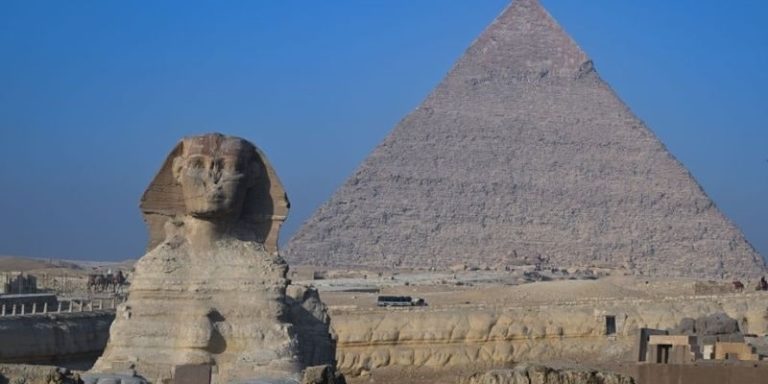Newly Found Diary Shows How Ancient Egyptians Built the Pyramids
Have scientists and archaeologists been correct all these years?
By: Kirsten Brooker | January 23, 2023 | 380 Words

(Photo by Stephane Cardinale – Corbis/Corbis via Getty Images)
The construction of the Great Pyramid of Giza in Egypt has amazed and bewildered archaeologists for centuries. The enormous structure is made of 2.3 million weighty pieces of rock and limestone. The stones are far too heavy to be carried or transported long distances by humans alone. The excavators discovered hundreds of papyri fragments from ancient diaries, one of which contained answers to many questions surrounding the development of the pyramids. Six of the discovered papyri are now on display at the Egyptian Museum in Cairo.
The Ancient Diary
In 2013, French and Egyptian archaeologists discovered the 4,500-year-old papyrus inside a cave at the Red Sea port of Wadi el-Jarf. Hundreds of papyri fragments were found in the cave, each containing various information surrounding the process of the complex construction of pyramids. One of the diaries, written by a middle-ranking inspector named Merer, was from the 27th year of the reign of Pharaoh Khufu.
The journal contained hieroglyphic writings that detailed how the large stones for the Great Pyramid of Giza were transported to the building site. Egypt’s Ministry of Antiquities stated: “The documents indicate the highly efficient administrative system in Khufu’s reign.” The other papyri contained information and ledgers regarding the financing behind the build and the supplies, food, and secondary jobs necessary to complete the work.
Building Blocks of the Pyramids – Too Heavy to Carry
Each of the 2.3 million stones weighed an average of 7 tons (14,000 pounds). The boulders had to be transported from quarries in Tura by boat along the Nile River and through man-made canals. Each trip took two to three days. The giant blocks were then unloaded onto the construction site using a system of ropes. From there, the rocks were placed along a line of tracks that allowed the workers to relocate them without pushing or lifting them.
Built between 2560 BC and 2540 BC, the Great Pyramid of Giza is the only of the Seven Wonders of the World still standing. It stood at the height of 450 feet and took approximately 23 years to complete. Six of the discovered papyri are on display for public view at the Egyptian Museum in Cairo, Egypt. Museum curators created a special exhibit for the remarkable artifacts to be preserved and viewed.
















